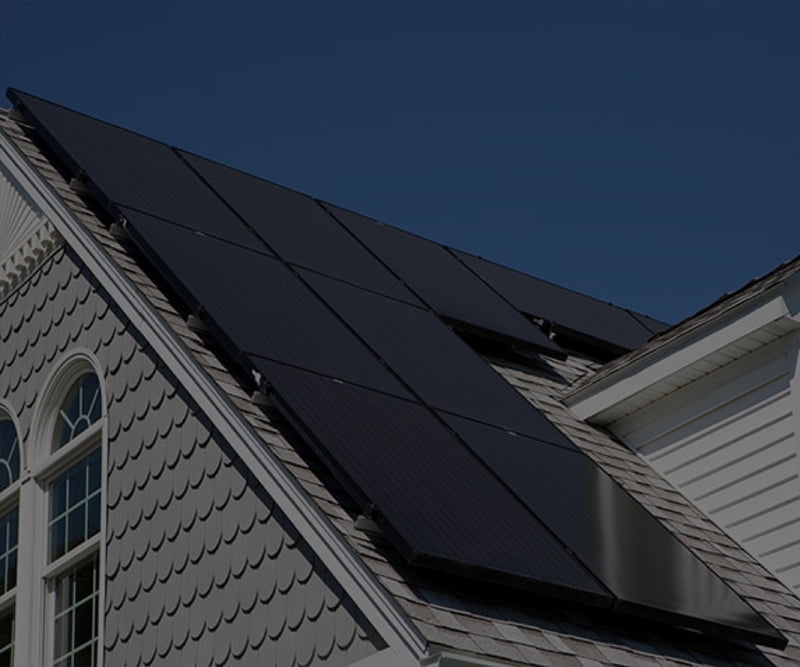What Is Net Metering and How Does It Work

Most homeowners who go solar will connect their system to the local utility grid. This approach allows you to store energy generated by your panels in the grid, eliminating the need to buy a battery bank to store it locally.
Before you can make this connection, though, you’ll need to sign a net metering agreement with your utility provider and enter the net metering program. The net metering program gives you permission to connect to the grid’s infrastructure and sets the rates at which you’re credited and billed for energy sent to and from the grid.
How Does Net Metering Work
Under a net metering plan, your solar power system connects to the utility grid. The energy generated by your solar panels is sent into the grid for storage, and you receive a credit for the amount of energy you produce.
When you run appliances in your home, the energy credits generated from your panels offset the electricity you use. If you use 1,000 kWh of energy per month, then your panels need to output 1,000 kWh to fully offset your bill.
It’s called net metering because the utility company installs a meter on your property that tracks your energy usage and the production from your solar panels, then bills you based on your net energy usage. If you produce more than you use, you can eliminate your monthly electric bill. (Note that the utility company may still charge a flat interconnection fee, typically $10-$20 per month, to connect and take advantage of the grid’s infrastructure).
Entering the Net Metering Program
Once your solar system is installed, you’ll need to complete the interconnection process with your utility company. Before you can connect to the grid, an inspector will need to visit the site to ensure the system is built to code.
Once you get the inspector’s approval, you’ll sign your net metering agreement and receive PTO (permission to operate) from the utility. Once you have PTO, you can bring your system online and start enjoying the benefits of solar power!
Understanding Net Metering Rates
The net metering agreement you sign with your utility provider sets two rates:
- The rate you pay for energy you use
- The rate the utility company compensates you for energy generated by your solar panels
Most utilities keep things simple, buying and selling energy at the same rate. For example, if you pay a rate of 14 cents per kWh for electricity, you’ll also be compensated 14 cents per kWh of energy generated by your panels.
However, some utilities charge different rates for energy bought and sold ‒ either by their own choice, or due to the influence of government programs designed to incentivize solar adoption.
Reach out to your utility provider for details about their net metering program. Here are a few programs you might encounter:
Time-of-Use Rates
It is fairly common for utilities to bill variable rates for electricity depending on the demand on the grid. These are called time-of-use rates, or TOU rates.
Many utilities charge higher TOU rates around 5-10PM, when people come home from work/school and demand on the grid is at its peak. Given that solar panels produce during the day, and higher TOU rates happen at night, this can have a direct impact on the ROI of your panels.
In some cases a backup power system can help you offset high TOU rates by drawing power from a local battery bank when TOU charges are in effect. Under net metering plans that allow for energy resale, you may also be able to sell surplus energy stored in your battery bank back to the utility for an additional profit.
Feed-In Tariff
A feed-in tariff is a government incentive program that encourages people to go solar. Under a feed-in tariff, the utility pays solar homeowners a premium rate for the energy generated by their panels.
For example, a utility that bills 13 cents/kWh may be required to pay homeowners 18 cents/kWh for anything they generate with solar. Local governments enact feed-in tariffs in hopes that strong financial incentives can entice people to switch to solar power.
Net Purchase and Sale
Under net purchase and sale plans, the utility buys solar energy from consumers at a discount rate. Rather than paying the full retail cost they bill for electricity, they pay only their avoided costs ‒- the amount they would have paid to produce that energy themselves.
Grid-tie solar can still be a profitable investment for homeowners under these plans, but the unfavorable billing structure eats into energy savings and extends the solar payback period.

Solar Calculator

Which Solar Kit Do I Need?
GET STARTED WITH SOLAR
WE’LL HELP YOU FIGURE OUT YOUR SOLAR NEEDS!
Fill out the form for a complimentary solar quote that includes a custom satellite layout, system design and a breakdown of total project cost and estimated savings.
